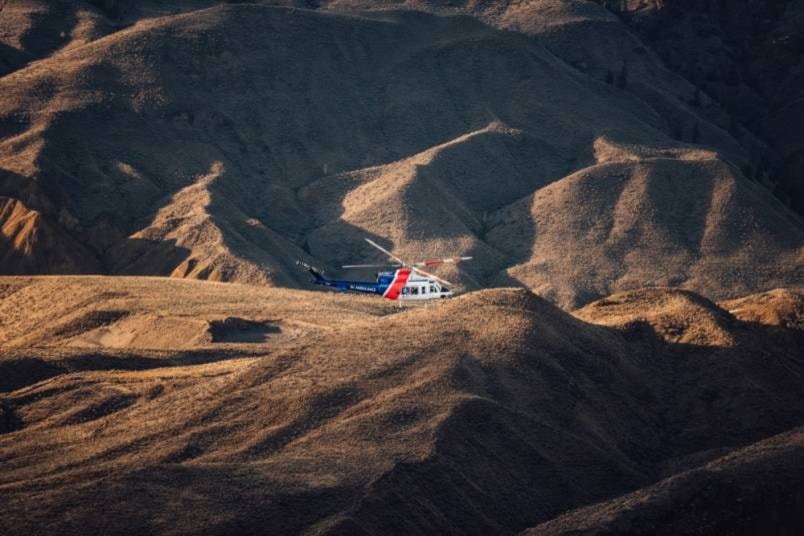Night-vision technology has been added to the Kamloops-based BC Emergency Health Services (BCEHS) air ambulance helicopter.
The air ambulance pilots have been training with night-vision goggles and, as of Wednesday, Dec. 11, are approved to use the Aviation Night Vision Imaging System on flights transporting patients in central B.C.
The night-vision technology, traditionally used in the military and for search and rescue missions, will be used to respond to critically ill or injured patients who require care and transport in central B.C., as well as patients at the scene of emergencies.
Until now, helicopter flights out of Kamloops, before sunrise and after sunset, were restricted by night visual flight rules. While the night visual flight rules still apply, the BCEHS noted night-vision goggles make it easier and safer to fly the copter at night.
“Putting night goggles on means it is much, much safer,” said Steven Williams, chief pilot of Summit Helicopters. “You can actually see the mountains below you in the dark. Once pilots wear the technology, they never want to fly without the goggles at night again.”
Night vision flying under Transport Canada regulations allows Summit Helicopters’ dedicated air ambulance to take off and land at lit airports and helicopter pads, within a 300-kilometre radius of Kamloops, during hours of darkness.
BCEHS’ critical-care paramedic team responds to about 25 medical emergencies per month using the Kamloops-based air ambulance helicopter and that number is expected to increase with the added capacity to respond in low-light conditions.
So far this year, the critical-care paramedic crew has responded by air to more than 280 calls.
Did you know?
• Installation of night-vision imaging technology is part of Summit Helicopters’ contract with BC Emergency Health Services.
• Summit Helicopters has been operating a dedicated helicopter on contract with BCEHS for seven years.
• Summit Helicopters’ use of night-vision technology means all four of BCEHS’ air ambulance helicopters are now outfitted with night-vision imaging.
• The three other BCEHS air ambulance helicopters are operated by Helijet (two in Vancouver and one in Prince Rupert).
• The Kamloops air ambulance helicopter operates 12 hours a day, 365 days a year in a 300-kilometre radius from Kamloops.
• It has two emergency patient stretchers and flies with two critical care paramedics, along with a two-pilot crew.
About night vision technology:
• Night vision aboard helicopters involves the use of night-vision goggles, known in the aviation industry as NVG.
• Even in extremely dark conditions, there are tiny bits of light present. Some of this light may be infrared light that isn’t visible to the naked eye. Night-vision goggles, using image-enhancement technology, collect all the available light, including infrared light, and amplify it so the pilot can see in the dark.
• The available light is captured, amplified, then turned into electronic information and displayed as a video image within the goggles.
• The goggles are attached to the pilot’s flight helmet, which allows the pilot to scan their surroundings.
• As is the same in daylight, certain environmental/weather conditions can reduce the night-vision capability of the goggles. For example, they do not see through clouds and vision clarity is reduced in heavy rain or snow.
READ MORE: Vernon nurse pleads guilty to mischief
READ MORE: Vernon Miracle Bucket Society founder fondly remembered
